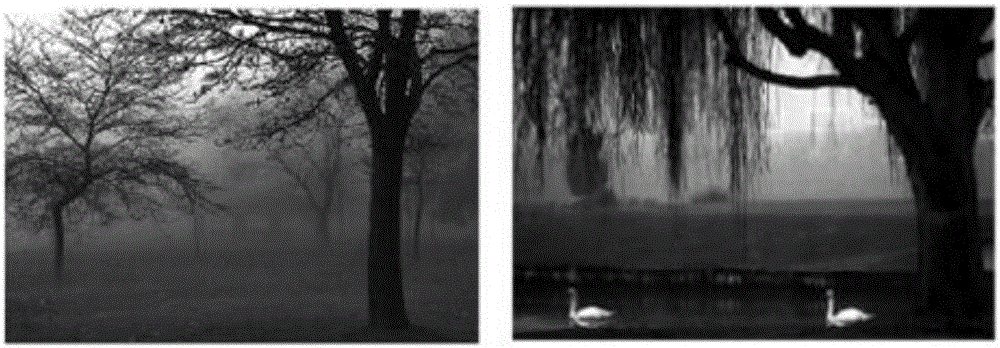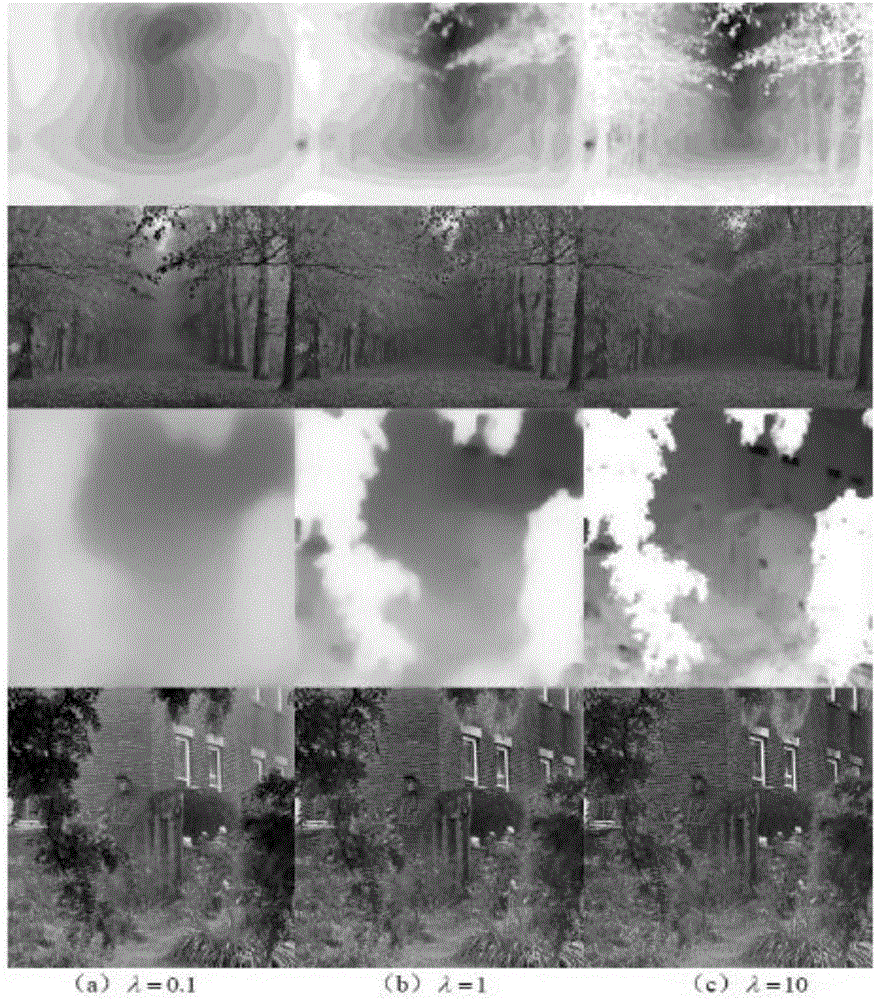Image defogging algorithm based on boundary constraint and context regularization
A boundary constraint and context technology, applied in the field of computer vision, can solve the problems of reduced image contrast, color distortion, and reduced scene visibility
- Summary
- Abstract
- Description
- Claims
- Application Information
AI Technical Summary
Problems solved by technology
Method used
Image
Examples
Embodiment 1
[0052] Embodiment 1: Taking the defogging of a single image as an example, the present invention will be further described in detail with reference to the accompanying drawings.
[0053] According to the physical characteristics of light transmission in foggy days, in the field of computer vision and graphics, the optical model of foggy images can be described as follows
[0054] I(x)=J(x)t(x)+A(1-t(x)), (1)
[0055] In formula (1): I(x) is the foggy image (that is, the input image); J(x) is the scene radiance (that is, the restored fog-free image); t(x) is the optical path propagation map, describing the scene transmission rate; A is atmospheric light. The purpose of defogging is to restore t(x) and A from I(x), and then restore the haze-free image J(x).
[0056] The present invention uses an effective regularization method to dehaze a single image, and dehazing a single image is essentially an under-constrained problem. The general principle for solving this type of problem ...
PUM
 Login to View More
Login to View More Abstract
Description
Claims
Application Information
 Login to View More
Login to View More - R&D
- Intellectual Property
- Life Sciences
- Materials
- Tech Scout
- Unparalleled Data Quality
- Higher Quality Content
- 60% Fewer Hallucinations
Browse by: Latest US Patents, China's latest patents, Technical Efficacy Thesaurus, Application Domain, Technology Topic, Popular Technical Reports.
© 2025 PatSnap. All rights reserved.Legal|Privacy policy|Modern Slavery Act Transparency Statement|Sitemap|About US| Contact US: help@patsnap.com



